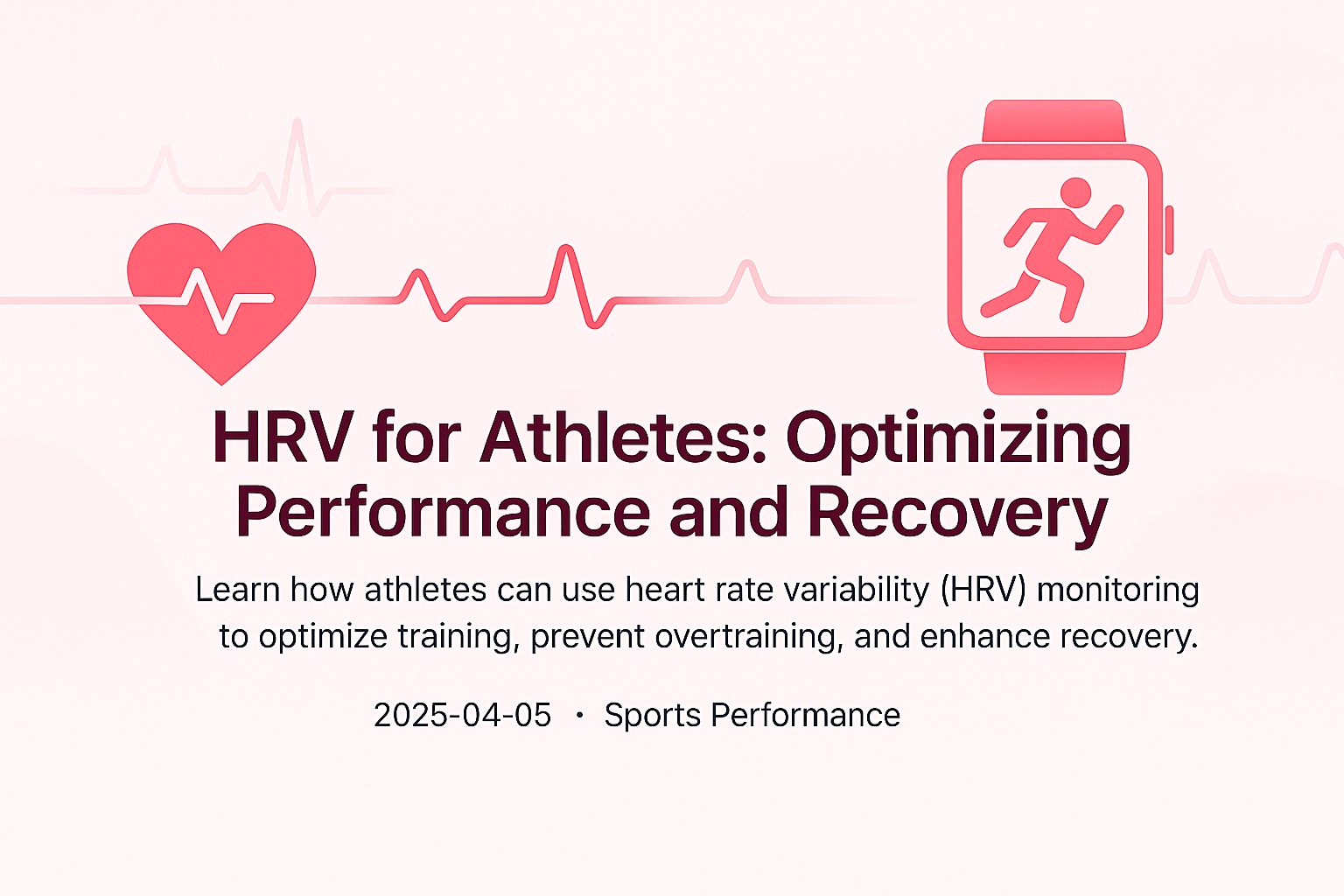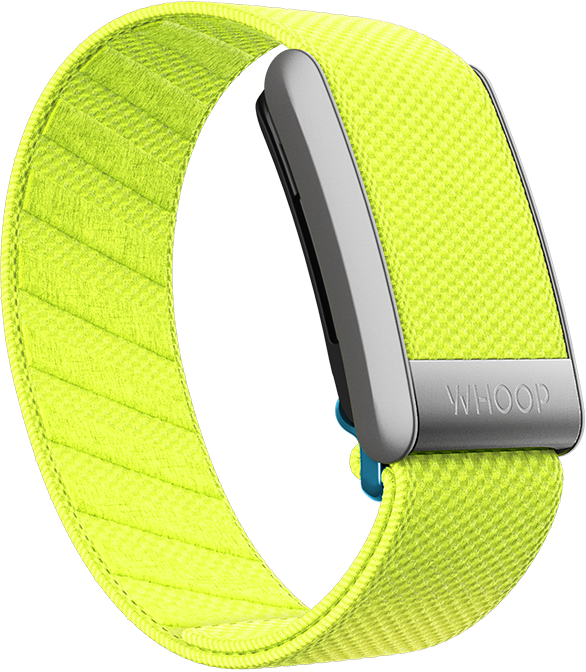HRV for Athletes: Optimizing Performance and Recovery

Ready to start tracking your HRV? Check out our top picks: Whoop | Oura Ring | Polar H10
HRV for Athletes: Optimizing Performance and Recovery
Heart rate variability (HRV) has become an essential tool for athletes at all levels, from weekend warriors to Olympic competitors. By monitoring the subtle variations between heartbeats, athletes can gain valuable insights into their recovery status, training readiness, and overall physiological balance.
Why HRV Matters for Athletes
For athletes, HRV serves as a window into the autonomic nervous system, which controls your body's stress response and recovery processes. Here's why it's particularly valuable for those engaged in regular training:
1. Objective Recovery Measurement
Rather than relying solely on subjective feelings of fatigue or readiness, HRV provides an objective measure of your body's recovery status. This helps prevent the common scenario where an athlete feels mentally ready to train hard but their body hasn't physiologically recovered.
2. Overtraining Prevention
One of the most valuable applications of HRV for athletes is detecting early signs of overtraining syndrome. A consistently declining HRV trend, especially when accompanied by other symptoms like decreased performance and increased resting heart rate, can signal that your body is not adapting positively to your training load.
3. Training Optimization
By tracking HRV patterns, athletes can make data-driven decisions about when to push hard, when to engage in active recovery, and when to rest completely. This individualized approach leads to more efficient training adaptations and better performance outcomes.
How Elite Athletes Use HRV
Professional and elite athletes have embraced HRV monitoring as part of their standard training protocols. Here's how they're using it:
Periodization Refinement
Elite coaches use HRV data to fine-tune training periodization, ensuring that high-intensity sessions align with periods of high physiological readiness. This maximizes the training effect while minimizing injury risk.
Travel and Competition Readiness
For athletes who travel frequently for competitions, HRV helps assess how well they're adapting to new time zones, environments, and pre-competition stress. Teams can use this data to adjust travel schedules and recovery protocols.
Individualized Training Prescriptions
No two athletes respond identically to the same training stimulus. HRV allows coaches to individualize training loads based on each athlete's unique physiological response and recovery pattern.
Implementing HRV Monitoring in Your Training
If you're an athlete looking to incorporate HRV into your training regimen, here's how to get started:
1. Choose the Right Monitoring Device
Several devices provide reliable HRV measurements for athletes:
- Whoop: Popular among professional athletes, Whoop provides continuous HRV monitoring and detailed recovery metrics. Its strain score helps quantify training load.

-
Oura Ring: The discreet form factor makes it ideal for athletes who don't want to wear a wristband during training. Its sleep tracking features complement the HRV data for a complete recovery picture.
-
Polar H10 Chest Strap: For athletes who only need HRV during specific measurement sessions, this provides medical-grade accuracy at a lower price point.
2. Establish Your Baseline
Before making training decisions based on HRV, collect at least 2-3 weeks of data to establish your personal baseline. HRV is highly individual, so knowing your normal range is essential for meaningful interpretation.
3. Implement an HRV-Guided Training Approach
Once you have your baseline, consider implementing one of these HRV-guided training approaches:
The Threshold Method
- High HRV (above your 7-day rolling average): Green light for high-intensity training
- Normal HRV (within your normal range): Proceed with planned training
- Low HRV (below your 7-day rolling average): Consider active recovery or technique work instead of high-intensity sessions
The Trend Method
Rather than making decisions based on a single day's reading, look for trends over 3-7 days:
- Rising trend: Your body is adapting well to training; consider progressively increasing load
- Stable trend: Maintain current training approach
- Declining trend: Consider reducing training volume or intensity until the trend reverses
Case Studies: HRV Success Stories
Elite Endurance Athletes
A study of Olympic-level endurance athletes showed that those who adjusted their training based on morning HRV readings experienced 14% greater performance improvements over a 12-week period compared to those following a predetermined training plan.
Team Sports Application
Professional soccer teams using HRV monitoring reported a 26% reduction in non-contact injuries when training intensity was modified based on team and individual HRV trends during a competitive season.
Recreational Athlete Transformation
Even weekend warriors benefit from HRV guidance. A group of recreational runners preparing for a half marathon who used HRV to guide their training not only improved their finish times by an average of 7 minutes but also reported higher enjoyment and lower perceived exertion during the race.
Common Mistakes Athletes Make with HRV
1. Overreacting to Daily Fluctuations
HRV naturally fluctuates day to day. Making dramatic training changes based on a single reading can lead to inconsistent training and suboptimal results. Focus on trends rather than individual data points.
2. Ignoring Context
HRV should be interpreted within the context of other metrics and life factors. Sleep quality, nutrition, hydration, and psychological stress all influence HRV and should be considered alongside the raw numbers.
3. Using HRV as the Only Metric
While valuable, HRV is just one piece of the performance puzzle. Combine it with other metrics like resting heart rate, perceived exertion, sleep quality, and performance tests for a complete picture.
Advanced HRV Concepts for Athletes
HRV During Exercise
While most athletes focus on morning/resting HRV, monitoring HRV during standardized exercise can provide additional insights into aerobic fitness and training adaptations. Increasing HRV at a given workload often indicates improved cardiovascular efficiency.
HRV-Guided Altitude Training
Athletes training at altitude can use HRV to gauge acclimatization. A stabilizing or increasing HRV trend suggests successful adaptation to the hypoxic environment.
Recovery Modality Effectiveness
Test which recovery modalities work best for you personally by tracking HRV response. Whether it's cold water immersion, compression garments, or specific nutrition strategies, HRV can help quantify which approaches accelerate your recovery most effectively.
Conclusion
For athletes serious about optimizing their performance and recovery, HRV monitoring provides an unparalleled window into physiological readiness and adaptation. By making training decisions based on objective data rather than subjective feelings alone, you can train smarter, recover more efficiently, and ultimately perform better when it matters most.
Ready to incorporate HRV monitoring into your athletic training? Check out our top recommended devices:
- Shop Whoop - Best for comprehensive training and recovery insights
- Shop Oura Ring - Best for 24/7 monitoring with minimal interference
- Shop Polar H10 - Best for precise, session-based measurements
Note: This post contains affiliate links. We may earn a commission if you make a purchase through these links at no additional cost to you.
Ready to improve your health with HRV monitoring?
Check out our top recommended devices below and start your journey to better health today.